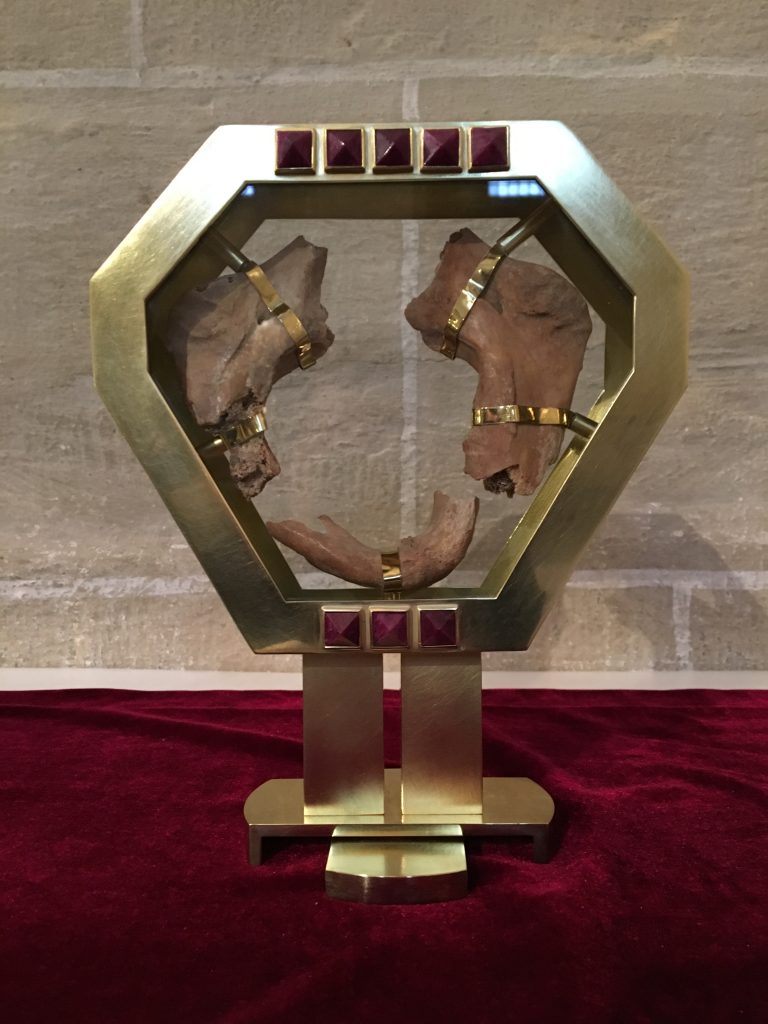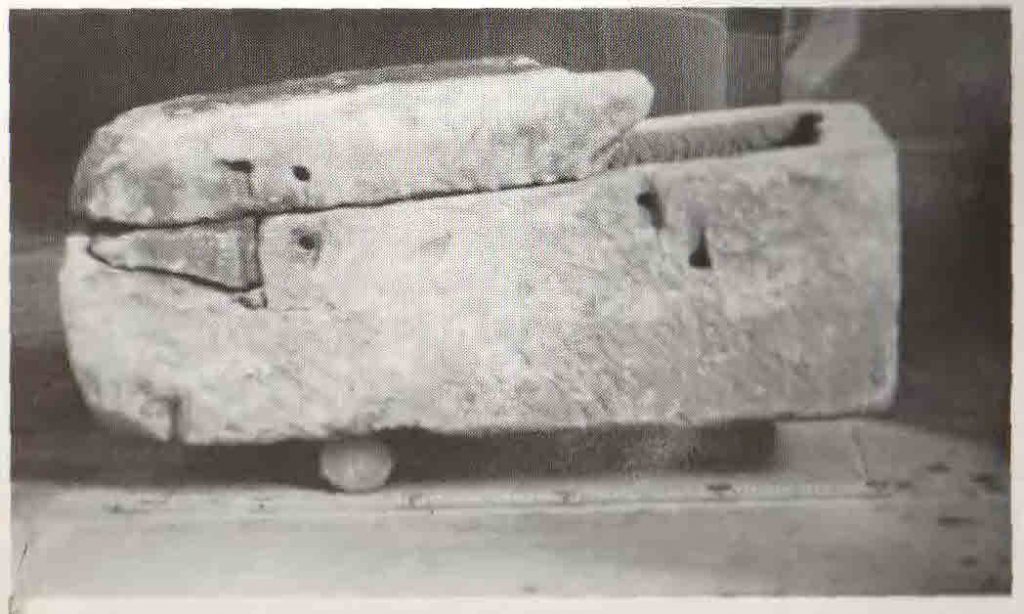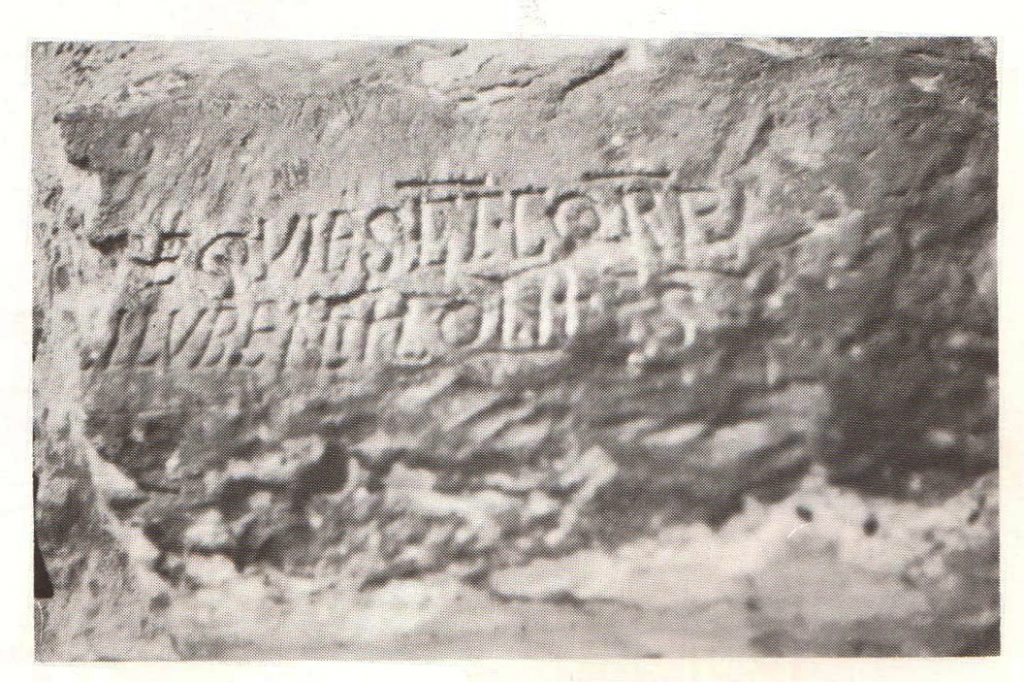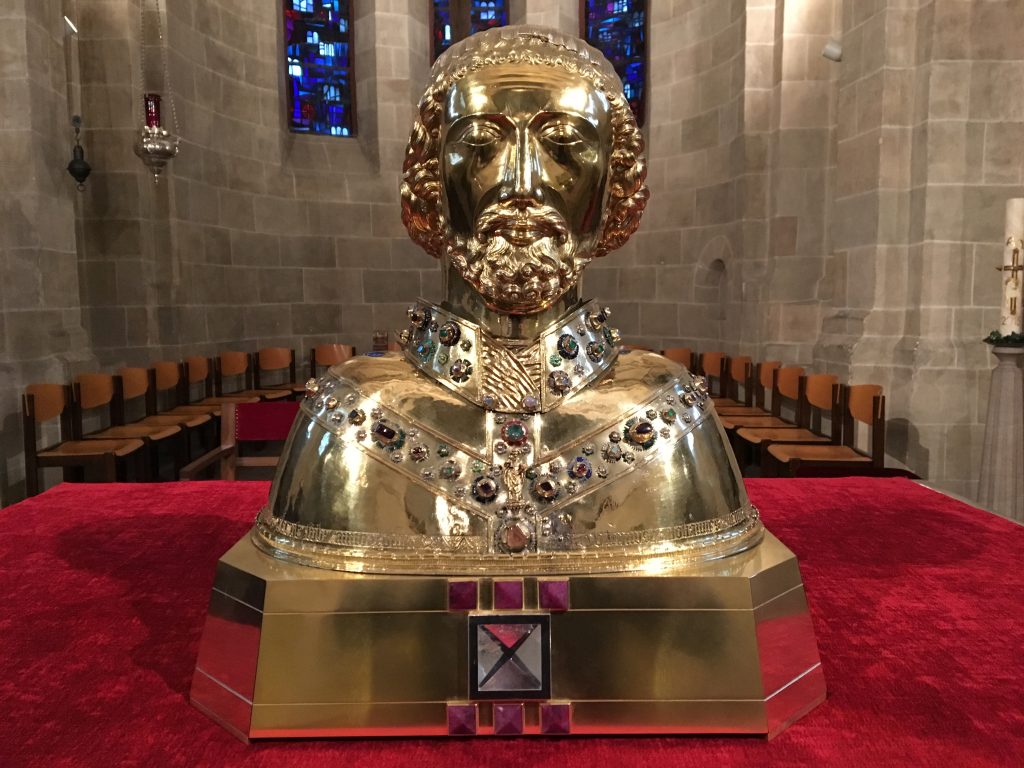The most important element of the church of Dietkirchen, the reliquary of St. Lubentius, should be particularly emphasized on this page.
Bust-reliquary
In an inscription along the base strip, the bust reliquary was donated in 1477 by the canon Johannes Schrepgin von Hachenberg, who had them made that year.
The inscription reads:
DOMINVS IOHANNES SCHREPGIN DE HACHENBERG HVIVS ECCLESIE CANONICVS __ IN HONORE SANCTI LVBENCI HOC FIERI FECIT SVB ANNO DOMINI 1477
The reliquary must, however, be considered separately into a head part and a breast part, since only the breast part, which is elaborately decorated with riveted flowers, rosettes and precious stones on the collar and a fork-shaped trimming strip, dates from the end of the 15th century.
The head part was created much earlier. It is estimated to date from around 1270, experts see the work as a Mainz goldsmith’s work. Originally the head part was made of one piece. Later it had been cut open. The part thus cut was hinged so that the head could be opened and closed again.
(See Rainer Rückert, Nassauische Annalen 1958, volume 69, pp. 87-93)
The original reliquary, without the new pedestal added in 2016, has a height of 39 cm, the oval pedestal measures about 42 x 26 cm.
The chest part consists of strong, thick fire-gilded silver plate.
The head part is about 23 cm high. It is also made of strong silver plate, which is also gilded. It was screwed onto the chest part with a 3 – 3.5 cm high adapter ring.
In the head of the bust rests the skull of the saint. However, the reliquary was certainly originally not created for the skull of St. Lubentius, as it cannot accommodate the lower jaw of the skull. Therefore, the lower jaw is located in the St. Lubentius church, together with other relics of the saint.
In a letter from the parish administrator Peter Sinder on 14 November 1865 to the Ordinariate in Limburg, he reports of a theft of the reliquary, which is said to have taken place in the night of June 2nd to June 3rd 1846. According to the report there were 3 men, one from Dietkirchen and 2 from Elz, who are said to have carried out the theft. They had been seen by a Jewish citizen when they were coming from Dietkirchen, crossing the “Meil”. The Jewish citizen recognized one of the three as a Dietkircher, but he did not dare to report it. The next morning already, a larger gemstone from the bust was found in the “Höhl” on the so-called “dicken Lay” on the way from Dietkirchen to Dehrn, and soon after that also the skull of the saint was found on a cabbage field, which lies between the mentioned path and the Lahn. Children later discovered the bust in the community forest in Elz. In Elz, more items from the theft were then found on a suspect. Lost in the theft was the removable head plate, which was first replaced by a copper plate and was only replaced in 1955 by the Munich goldsmith and restorer Johann Michael Wilm as part of a fundamental restoration.
In 2016 the Würzburg goldsmith Markus Paul Engert (*28.09.1968) made a reliquary pedestal for the bust of St. Lubentius. The pedestal is made of gilded brass and set with rock crystal and ruby.
In this pedestal is kept the jaw of St. Lubentius. For an open presentation of the Jaw relics, the artist Engert has made a suitable reliquary.
Joachim Schäfer – Ökumenisches Heligenlexikon
Relic base for the bust of St. Lubentius in brass-gilded with rock crystal and ruby in 2016
Von Agentophil – Eigenes Werk, CC BY-SA 4.0,
https://commons.wikimedia.org/w/index.php?curid=55600601

Reliquary for the jaw of St. Lubentius in brass-gilt with ruby in 2016.
By Agentophil – Own work, CC BY-SA 4.0, https://commons.wikimedia.org/w/index.php?curid=55600639
Sarcophagus of St. Lubentius
The sarcophagus, which is located under the altar in the Lubentius Church, has an external length of 1.10 m, a width of 0.43 m and a height of 0.33 m. The inner length is 0.92 m, the inner width is 0.25 m and the inner height is 0.29 m.
The sarcophagus has a stone lid that still exists today, which was connected to the sarcophagus by metal clamps. These clamps are no longer in existence today. About one third of the lid is destroyed.
The lid contains the inscription:
(HIC) REQVIESC(IT) CORP(VS) I (SANCT)I LVBENTII CONFESS(SORIS)
Translation:
Here lies the body of St. Lubentius, the confessor
In the coffin itself there was originally a small lead plate measuring 11 cm x 4.9 cm. Today this lead plate is in the cathedral treasure in Limburg and bears the same inscription as the coffin lid:
HIC REQUVIESCIT COR/PVS S(AN)C(T)I LVBENCII CONFE(SSORIS)
The conspicuously small sarcophagus still contains the mortal remains of St. Lubentius. In it his body was transferred from Kobern to Dietkirchen.




